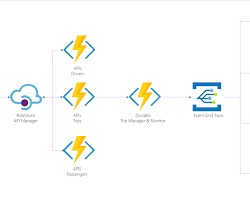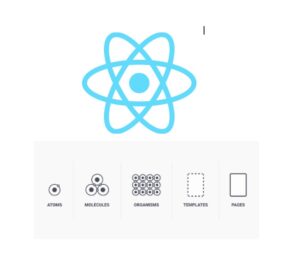
In the ever-evolving landscape of technology, React Native‘s journey into the realms of Augmented Reality (AR), Virtual Reality (VR), and the Metaverse stands as a testament to its adaptability and innovation. With each passing day, developers are discovering new ways to harness React Native’s power to create immersive experiences that push the boundaries of possibility. In this extensive exploration, we embark on a voyage to unravel the intricacies of React Native’s integration with AR/VR technologies, uncovering a world of endless possibilities and charting the course towards a future where digital and physical realities converge seamlessly.
Understanding React Native’s Foundation
At its core, React Native represents a paradigm shift in mobile application development. Born out of Facebook’s desire for a unified solution to building cross-platform applications, React Native empowers developers to write code once and deploy it across multiple platforms, including iOS and Android. Its component-based architecture and declarative syntax make it not only efficient but also intuitive, enabling developers to focus on crafting rich user experiences without the hassle of platform-specific nuances.
Integrating React Native with AR/VR Technologies
As the demand for immersive experiences continues to soar, React Native has stepped into the spotlight as a viable platform for AR/VR development. Leveraging its familiar JavaScript syntax and extensive ecosystem, developers can seamlessly integrate AR/VR functionalities into their applications with ease. One of the most notable frameworks in this space is React 360—a JavaScript library tailored specifically for building VR experiences using React Native components.
Let’s explore a practical example of integrating React Native with AR using ViroReact:
import React, { Component } from 'react';
import { StyleSheet, View, Text } from 'react-native';
import { ViroARSceneNavigator } from 'react-viro';
export default class ARScene extends Component {
render() {
return (
<View style={styles.container}>
<ViroARSceneNavigator
initialScene={{ scene: require('./ARScene') }}
apiKey="YOUR_API_KEY_HERE"
/>
</View>
);
}
}
const styles = StyleSheet.create({
container: {
flex: 1,
justifyContent: 'center',
alignItems: 'center',
},
});
In this code snippet, we define an AR scene using ViroReact’s components and integrate it into a React Native application. This enables developers to create immersive AR experiences that run seamlessly on mobile devices.
Embarking on the AR/VR journey with React Native
As the demand for immersive experiences continues to soar, React Native has stepped into the spotlight as a viable platform for AR/VR development. Leveraging its familiar JavaScript syntax and extensive ecosystem, developers can seamlessly integrate AR/VR functionalities into their applications with ease. One of the most notable frameworks in this space is React 360—a JavaScript library tailored specifically for building VR experiences using React Native components.
To illustrate the integration of React Native with AR/VR, let’s delve into a practical example:
import React from 'react';
import { AppRegistry, StyleSheet, Text, View } from 'react-360';
export default class VRApp extends React.Component {
render() {
return (
<View style={styles.panel}>
<Text style={styles.greeting}>Welcome to React 360!</Text>
</View>
);
}
}
const styles = StyleSheet.create({
panel: {
width: 400,
height: 300,
backgroundColor: 'rgba(255, 255, 255, 0.8)',
justifyContent: 'center',
alignItems: 'center',
},
greeting: {
fontSize: 30,
},
});
AppRegistry.registerComponent('VRApp', () => VRApp);
In this simplified example, we define a basic VR scene featuring a text element using React 360’s components. This serves as a foundation upon which developers can build more intricate VR experiences incorporating interactive elements, 3D models, and spatial audio.
Exploring Metaverse Development with React Native
As the concept of the Metaverse continues to gain momentum, React Native emerges as a key player in its development. The Metaverse presents unique challenges and opportunities, including the need to create interconnected virtual worlds that span multiple platforms and devices. React Native’s cross-platform capabilities position it as an ideal framework for building applications that contribute to the growth and evolution of the Metaverse.
OvercomingTechnical Challenges
While React Native offers many advantages for AR/VR development, it also presents certain technical challenges. These challenges may include optimizing performance, ensuring compatibility across different devices and platforms, and managing complex interactions in immersive environments. By understanding these challenges and employing best practices, developers can overcome technical hurdles and create robust AR/VR experiences with React Native.
Advanced Techniques and Best Practices
To further enhance AR/VR development with React Native, developers can leverage advanced techniques and best practices. This may include utilizing state management libraries like Redux for managing complex application state, implementing performance optimizations such as code splitting and lazy loading, and leveraging native modules for accessing device-specific features.
Conclusion
React Native’s integration with AR/VR technologies and the Metaverse represents a significant milestone in the evolution of application development. With its flexible architecture, cross-platform capabilities, and vibrant ecosystem, React Native empowers developers to create immersive experiences that captivate and engage users. As we continue to explore the possibilities of AR/VR and the Metaverse, React Native stands as a versatile and powerful tool for building the next generation of interactive applications. By embracing React Native’s technical capabilities and best practices, developers can embark on an exciting journey into the world of AR/VR and the Metaverse, unlocking new realms of creativity and innovation.





